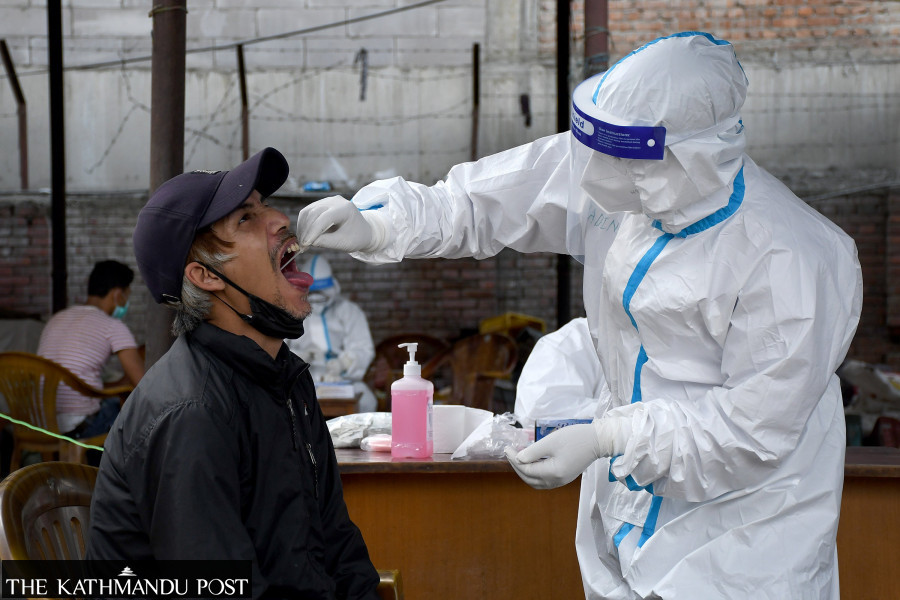Health
Nepal to test influenza patients for human metapneumovirus
This already familiar virus causes flu-like symptoms and poses higher risk for young children, the elderly, and those with weak immunity.
Post Report
In a bid to determine the spread of human metapneumovirus in Nepal, the Epidemiology and Disease Control Division has decided to test specimens collected from the patients suffering from respiratory illnesses.
Officials say that testing is the only way to confirm whether the infectious virus has already penetrated communities in Nepal this winter.
“Although infection of human metapneumovirus is not new to our country and has been detected several times in the past, we have decided to carry out testing on specimens from patients suffering from influenza-like symptoms who test negative for influenza virus,” said Dr Yadu Chandra Ghimire, director at the division.
Human metapneumovirus is a respiratory illness that usually causes flu-like symptoms. Doctors, however, said that very young children, elderly people with weakened immune systems, or those with underlying conditions are at higher risk of getting severe. They say that the virus usually causes upper respiratory infections but can sometimes trigger lower respiratory infections including pneumonia, asthma, and chronic obstructive pulmonary disease (CoPD), among others.
Both southern and northern neighbours—China and India—have reported cases of human metapneumovirus in recent weeks. India has confirmed at least seven cases in cities including Bengaluru, Nagpur, Chennai and Ahmedabad. Indian health authorities have directed states to strengthen surveillance of influenza-like illness and severe acute respiratory illness following the confirmation of the virus.
Similarly, China has reported a rise in cases of human metapneumovirus since mid-December.
Dr Ghimire said that infection of human metapneumovirus during winter is common and it looks similar to several other common viral illnesses that often affect many people including children and the elderly.
“We should not panic over human metapneumovirus infections, as this virus has been circulating in our communities for years,” said Ghimire. “We usually don’t test unless there is a spike in new cases. We have decided to carry out testing, as the rise in infections in our neighbours have become headline news.”
Doctors say the human metapneumovirus is a common virus that has been circulating around the world for several decades. Scientists first identified this virus in 2001. The virus spreads through direct contact with infected people or through contaminated surfaces.
It is estimated that almost everyone gets infected with the said virus at some point in their lifetime, but symptoms are mild after the first infection. It is estimated that 10 to 12 percent of total respiratory illness in children is caused by the human metapneumovirus.
Symptoms of infection include cough, fever, sore throat, runny nose, shortness of breath, rash, and wheezing. Most patients can manage the illness at home and there is no antiviral medicine against the disease.
Doctors in Nepal say respiratory viral diseases flare up during winter months.
“Multiple respiratory viruses become active during the winter,” said Dr Sher Bahadur Pun, chief of Clinical Research Unit at Sukraraj Tropical and Infectious Disease Hospital. “Human metapneumovirus has been circulating in our communities for years, but it gets detected only if testing is carried out.”
Pun, meanwhile, stressed the need for active surveillance mechanisms and regular testing to monitor any potential mutations in the virus.
Public health measures—mask-wearing, handwashing, avoiding crowds, and maintaining social distancing—can reduce infection, according to doctors.




 12.12°C Kathmandu
12.12°C Kathmandu













